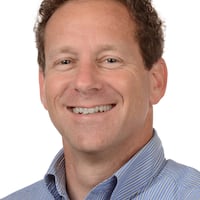Emory University doesn’t want to go off the grid. It just would like one of its very own for crucial portions of its campus.
The Atlanta-based private university is pushing the state to support creation of a self-contained electricity micro-grid, which would allow some energy for the school to be produced on or near campus. Such a system could help prevent parts of the university and the neighboring Centers for Disease Control and Prevention from losing crucial electricity during hurricanes, cyber-attacks and other calamities, according to the university.
Emory leaders want all Georgia Power customers to help pay for the system because the community will benefit from protecting critical medical facilities and research. They are asking state utility regulators to pass on up to $10 million in costs to ratepayers, a state official said.
Emory has yet to lay out detailed plans and didn’t confirm the costs.
The system would initially serve Emory University Hospital and Emory’s Health Sciences Research Buildings, according to a university filing with the state.
“Future expansion could include some buildings at the CDC, as well as community facilities,” such as a nearby high school, spokesperson Laura Diamond wrote in an email to The Atlanta Journal-Constitution.
The system could rely on solar power, battery storage and a combined heat and power system that some in the industry predict would be fueled by natural gas.
"Recent events — such as the sustained outage at the Atlanta Airport, the sniper attack at Pacific Gas and Electric's transmission substation, outages from Hurricane Sandy, as well as others throughout the country — highlight that the unexpected can happen," Joan Kowal, Emory's senior director of energy strategy and utilities, wrote in a filing with the state.
Resiliency has become a popular word in energy circles. Large companies, colleges and other institutions generally have emergency backup generators for short-term, critical needs. But emergency generators “do not sufficiently address these needs” and sometimes fail, Kowal said.
Some organizations have adopted or are exploring micro-grid systems that they hope might offer more power, potentially lower costs and more choices on what kind of energy is used.
Robust micro-grids could allow a school or company to be a relatively self-sufficient energy island, while also keeping some connection to the broader power grid.
For traditional utilities, the potential for lots of micro-grids is a complication and a potential threat to their business models. But it may not have to be the latter. Tom Fanning, the chief executive of Southern Company, Georgia Power’s parent, recently told analysts micro-grids are a “very small but very important option” that could spur growth and accelerate shifts to new generation.
Georgia Power already has a micro-grid under construction around Georgia Tech’s Tech Square, where researchers hope to learn about micro-grid deployment. The system is supposed to be in operation this fall and would use fuel cells, battery storage, diesel generators and a natural gas generator. Other equipment could be added later, including solar panels and electric vehicle chargers, according to Georgia Power.
That project was backed by the Public Service Commission, the state’s elected utility regulatory body.
Now, Emory wants PSC support for its own project, which could grow to 10 times the size of the Georgia Tech system. Emory has asked that the project eventually be added to Georgia Power's long-range energy plans.
But Georgia Power spokesman wrote in an email that the utility has “not identified a capacity need for this proposed micro-grid project that would benefit all of our customers,” a requirement for the costs to be covered by customers overall.
Liz Coyle, who leads consumer advocacy group Georgia Watch, suggested a better option would be to put a micro-grid at Grady Memorial Hospital, “a critically important regional trauma center.”
And if the CDC needs a micro-grid, she said, it should be paid for by the federal government.
CDC spokesperson Kathy Harben said that the “CDC currently has plans in place to address all types of emergencies, including utility disruptions.”
While the “CDC can’t speak to the Emory proposal,” Harben wrote in an email, “the agency supports plans for expanded energy capacity that would benefit occupants of the Clifton Corridor, including Emory, CDC, and neighborhood businesses and residences.”
PSC vice chairman Tim Echols favors Emory’s proposal.
“The pilot project needs to be approved by the commissioners and could be a model for protecting this hospital and others during catastrophic outages,” he wrote in an email to The Atlanta Journal-Constitution.
“Investing millions in such a pilot project might lead the way for more health-care facilities to do successful projects on their own.”
Echols wrote that Emory is asking for up to $10 million of its costs to be covered by Georgia Power customers overall. But he predicted the total costs for the project would be far higher.
“I am unsure of their source of the remaining funds,” he wrote.
While he called micro-grids “a sweeping public policy trend in the United States,” Echols said most of the costs will be borne by the customers who benefit directly from them.
About the Author
The Latest
Featured



